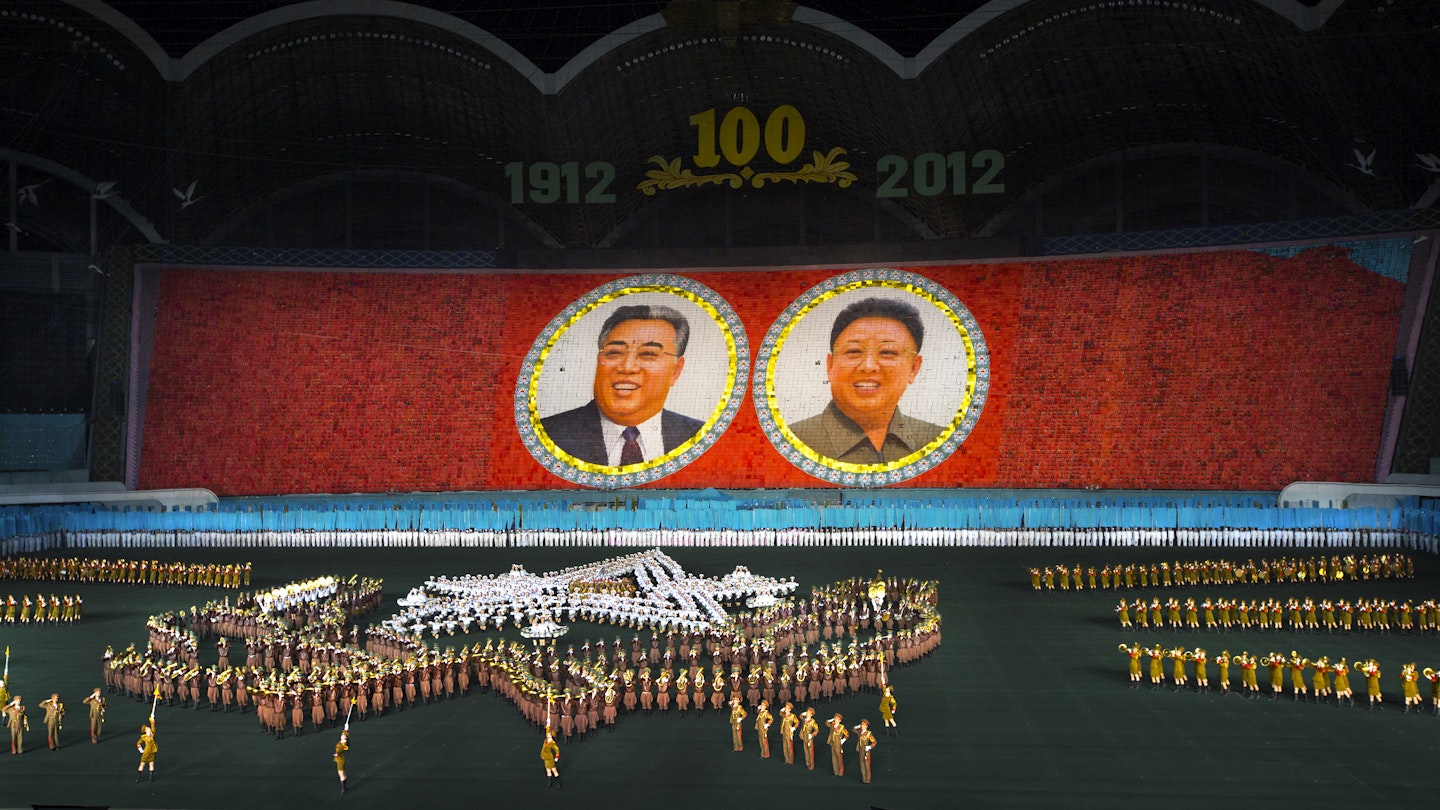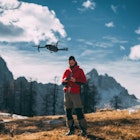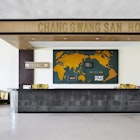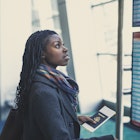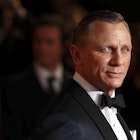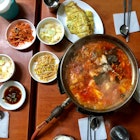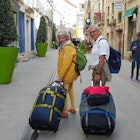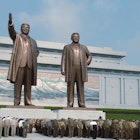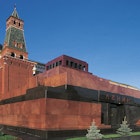With so much of the world inaccessible right now, we’re taking a look through our archive of travel writing to revisit our past trips and to look at how Lonely Planet has spent decades exploring the world in the hope of better understanding it. In this piece from 2013, Amanda Canning travels to the hermit kingdom – North Korea – to discover first-hand a land and its people behind the headlines.
The young woman waiting in the arrivals hall looks anxious, her small mouth pinched and unsmiling. Every button on the jacket of her pink tweed suit is done up, every hair on her head is combed precisely into place, framing the tidy features of her bespectacled face. All around her, people throng and holler, checking bags, laughing, and loudly introducing themselves to one another.
"Hurry, hurry, we will be late," shouts Mr. O, ushering his tour group out of the airport and on to a minibus. The pink-suited lady follows at a neat trot, her heels click-clacking across the tarmac. Perched on her seat, timid as a sparrow, she takes a look around at her fellow passengers. These, the latest batch of tourists tumbling in nervous excitement off the afternoon plane from Beijing, are her first encounter with Westerners.

Meeting Miss Kim
Miss Kim is 21, an only child, and lives with her teacher mother and translator father on the fifth floor of an apartment block along a park-lined stretch of river in Pyongyang, the capital city. In her spare time, Miss Kim likes to dance and sing in her bedroom, meet up with friends and mess around on her computer. She’s keen to start aerobic classes at the new gym across town.
She is 18 months from finishing her English course at university; as one of the brightest students, she was plucked from her class and allowed to join Mr. O in guiding a group of foreigners on a week-long tour of her homeland – North Korea, one of the most secretive and cut-off countries in the world.
For now though, Miss Kim is too shy to speak. Mr. O, an old pro effortlessly reeling out a story or a joke, his jet black hair swept back from his forehead, holds court as the minibus races through Pyongyang. Small scenes of life flash through the window: trams stuffed with workers, curious faces peering out into the night; cyclists stopping for a chat on street corners; an open-air cinema, on the screen a nurse tending to a comically bandaged patient; ropes of plastic flowers draped over balconies, rooms beyond lit a sickly green; soldiers marching curbside in neat lines.

Progress is stilted as we turn towards the May Day Stadium and make our way through crowds of milling students, edging past Mercedes, BMWs and the republic’s own-make Peace Car. A group of 200-strong women in sailor uniforms – enormous white hats perched jauntily on heads – practice a drum routine, twirling drumsticks in gloved hands. Mr. O and Miss Kim are soon off, darting across the car park and up several flights of stairs, past souvenir stalls selling T-shirts, DVDs and posters.
The Mass Games of Pyongyang
The stadium is full and the show has already begun. Far below the prime seats, taken by military personnel and tourists, North Korea’s version of its own history is being played out on the floor: from the Japanese occupation of a once happy and bucolic land via revolutionary triumphs over the country’s American oppressors to the formation of the Democratic People’s Republic of Korea, to give the country its official name.
This is no dry presentation. This is a spectacle. This is the precision and scale and theater of the opening ceremony of the 2008 Beijing Olympics tenfold.
One-hundred thousand people perform each night at the Mass Games, in a display of mass choreography that’s hard to absorb. Gymnasts swoop through the air on zip wires and are catapulted out of cannons. Thousands of tiny children pedal about on unicycles and juggle balls in perfect synchronicity. Soldiers march, choirs sing, athletes somersault, dancers twirl. Behind them, 20,000 kids hold picture books, flipping the pages to create enormous mosaics, of a rising sun, of fighters going into battle, of the North Korean flag.
And on and on and on it comes, giddying scenes of prosperity, of hope and happiness. Miss Kim grows animated, excitedly pointing out the significance of each song and clapping along. Merry apples dance through orchards, pigs skip and tumble, workers gaily weave textiles, girls spin through hoops to celebrate CNC, North Korea’s industrial hole-punching technology ("It is the most advanced in the market," Miss Kim whispers proudly. "Let’s bring the cutting-edge!"). She performed in the Mass Games herself as a child, playing the trombone, and giggles at the memory.
"I felt like an artist, I loved it. I trained very hard but it was exciting. I was very proud to represent my country."
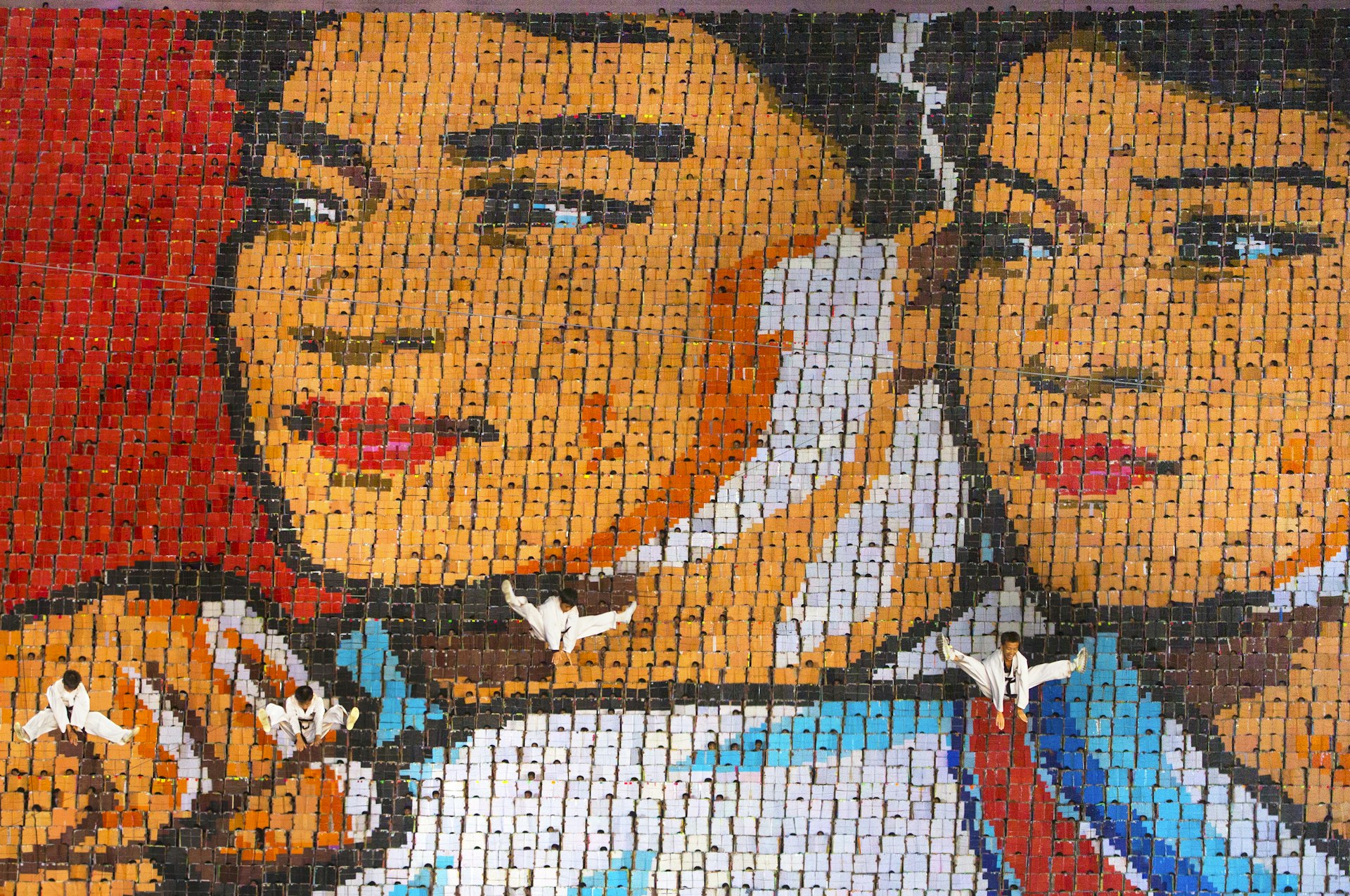
The audience reserves its loudest cheers for when the picture books turn to reveal giant portraits of two men, looking cheerfully out from the stage as if into an impossibly bright future.
Miss Kim sighs.
"We’re a great nation, happy and prosperous, but we are great not because of our size or population but because of our leaders."
Her voice breaks when a fake flower the size of a house is carried out accompanied by a mournful tune.
"It’s a new breed called Kimjongilia after the Dear Leader," she murmurs. "How we miss him. He died on his way to his people. The song is written about him. People cry when they hear it."
The cult of personality
It is a first glimpse of the extraordinary cult of personality built around Kim Il-sung and his son Kim Jong-il. Every North Korean wears a pin badge showing the face of the Great Leader or the Dear Leader, as they are known, and must hang their pictures rather than those of family in their homes.
Their slogans adorn apartment blocks and walls in the city and are emblazoned across hills and fields in the country. Huge paintings and mosaics show their likeness from factory to farm. Throughout our tour, no opportunity to praise the leaders is wasted. At a school camp we are shown a badly stuffed seal and informed it was a generous gift from Kim Jong-il.
At a college dance, we are told that the Dear Leader also wrote the songs and invented the moves that all the students know by heart. At a cooperative farm, our guide reveals that the leaders, including new incumbent Kim Jong-un, have visited in order to offer edifying "on-site guidance."
In Pyongyang, the performance comes to a close for another night, and the crowds spill back out of the stadium. Groups of Young Pioneers, schoolkids in dapper white and blue uniforms, red neckerchiefs bobbing, saunter past, singing a socialist song.
A British guide, Hannah Barraclough, waits to round up the last few members of her group. Tourists are allowed into North Korea only on organized tours closely monitored by the state. Hannah has been leading such trips for six years and sees how visitors struggle to tally their experiences, of a population apparently proud of their country, with the stories they read back home. News reports speak of nuclear aggression, famine, summary executions, concentration camps and a people living under a reign of terror.
"People forget that North Koreans don’t hear these negative stories," Hannah says. "They only ever hear positive things about how much the leaders do for their country, how they devote their lives to their people, so it is little wonder that they hold so much respect for them. When you don’t live in a society where you have access to many different opinions, you tend to believe what you are told."

The DMZ
Miss Kim is asleep, her interpreter’s manual open on her lap, and Mr. O is listening to a borrowed iPod as the minibus rolls south out of Pyongyang and along the six-lane Reunification Highway. The occasional army truck rumbles by, the teenage soldiers packed in the back offering playful salutes to our waves.
Ox carts heavy with hay lurch behind them. In the fields, in the shadow of giant billboards giving motivational advice or productivity targets, women in headscarves bend over crops of maize, corn and rice. Others sit by the roadside in the shade of birch trees, bikes propped up next to them on verges dotted with pink and white cosmos. Everywhere, people are walking. The whole of North Korea seems to have somewhere to get to.
Every couple of miles, massive concrete pillars hulk over the road. Designed to block the path of approaching tanks, they are the first clue that we are heading towards the most heavily militarized region in the world.
It is Miss Kim’s first trip to the somewhat ironically named DMZ (De-militarized Zone), the 160-mile-long buffer between North and South Korea that has been in place since an uneasy armistice was called on the Korean War in 1953. Today, North Korean soldiers engage in a face-off with South Korean and American troops just a few feet away, and tourists on either side of the border stand and stare at one another.
Miss Kim points to a mural of the leaders and translates the slogan beneath it: "One Korea. Let’s reunite the fatherland for the next generation." She is visibly moved. "This place shows the tragic history of our country. I know families are separated. Mother from son, sister from brother. Coming here, I get the feeling that I have to try my best to reunify our country."

A few miles away, the wall that physically divides the country sweeps over hills dense with foliage. Dragonflies hover in the still air. An affable lieutenant-colonel Chae, accompanies us to the visitor center, his coat pinned with an impossible number of military decorations. He recounts a history of American imperialism and North Korean resistance, angrily stabbing a stick at a map of Korea to prove a point. As Miss Kim peers through binoculars to see for the first time "the wall of anguish and treachery" that she has long heard about, he poses for pictures and stares critically towards the South.
The division of Korea and the hope of reunification run through every aspect of North Korean history and culture. Pop songs and film plots revolve around it, giant monuments to it dominate every town, children are taught about it from dawn to bedtime.
At Song Do Wan summer camp outside the port town of Wonsan on the east coast, Young Pioneers race excitedly to their dorms, unpacking suitcases beneath portraits of Kim Il-sung and Kim Jong-il. According to their teacher, Miss Sujong, kids come from all over the country to join one of 19 such camps for a week.
"The main purpose of the camp is to build up their bodies and minds for the purpose of building up the Fatherland," she says, standing next to a globe presented as a gift by the Great Leader and notable for the thick red line splitting Korea in two.
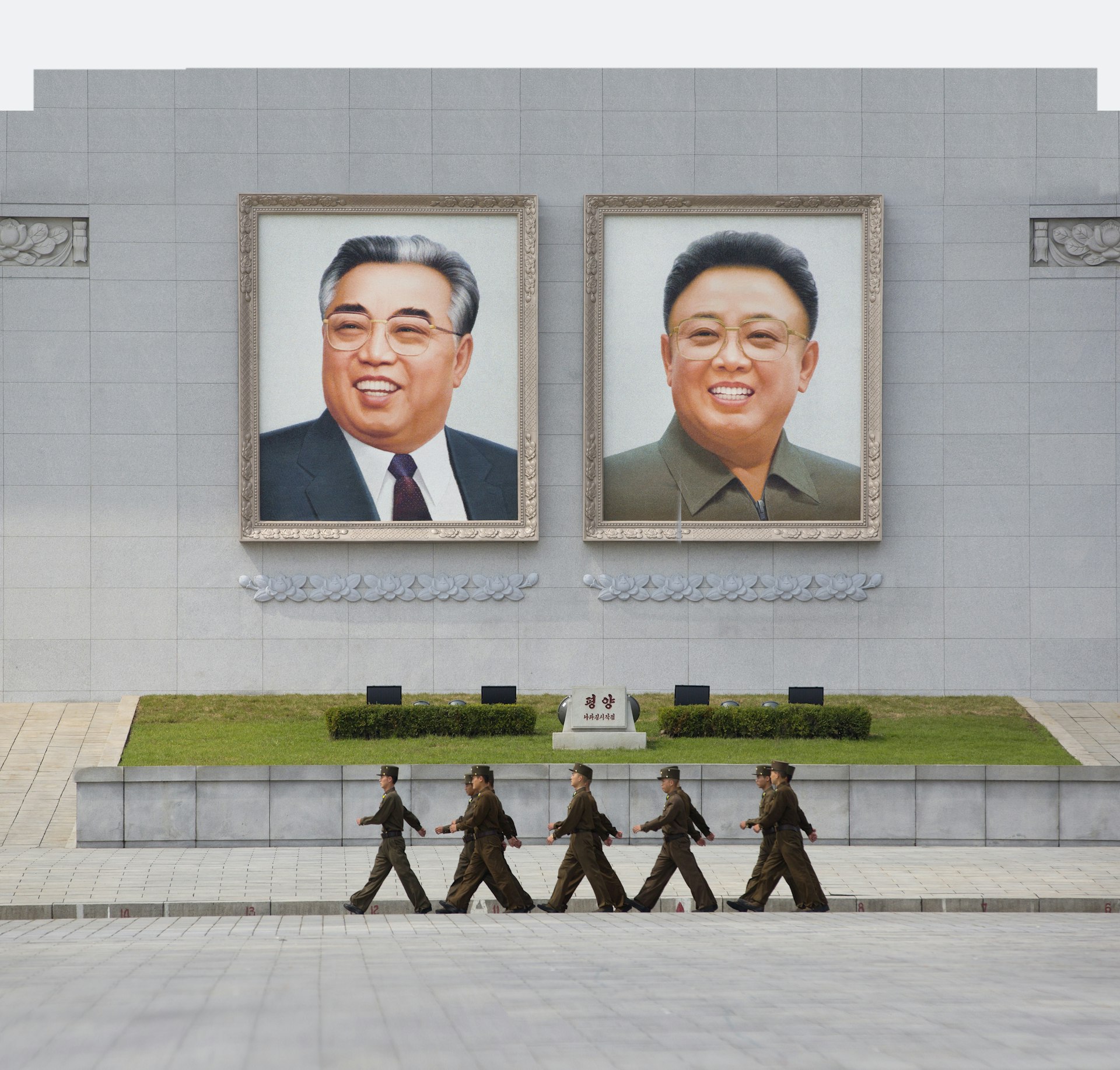
Miss Kim came to the camp aged 14. "I remember it well. It was so much fun. The scenery is beautiful here." It was her first trip away from her parents, her first time outside Pyongyang. "I missed them but it was good too. Travel makes my mind wider."
There is a display on the feats of the leaders in one block of the camp, and Miss Kim pores over every photo. She spends a long time looking wistfully at a photocopied image of Kim Jong-il in his customary sludge-colored suit.
"He was so intent on helping the economy, he didn’t have many clothes. He spent most of his life defending peace so the children could prosper from his hardship and live a happy life."
National Day
National outpourings of affection and gratitude for the perceived selflessness of the leaders reach a climax on National Day, held each September to mark the founding of the republic. In Pyongyang, workers, soldiers and children gather in front of towering bronze casts or giant mosaics of Kim Il-sung and Kim Jong-il, taking it in turn to shuffle forwards in lines and bow. One member of each party is tasked with laying flowers at the statues’ feet, and the pavements are soon carpeted in bouquets. There’s a carnival atmosphere in the city.

People are dressed in their best clothes – some kids grappling with oversized military costumes – and there is laughter and chatter once the day’s duty has been observed.
Families are out in the squares, teaching their children to skate or taking pictures. In Moran Park, the whole of Pyongyang seems to be having a picnic. Men and women sing and dance, falling onto the grass under the effects of too much rice wine.
Miss Kim stays on the outskirts, scared she might be dragged into a dance by the boisterous throngs. But she is more gregarious herself now, keen to discuss life in Europe and compare it with her own. She smiles as a toddler jerks and wiggles to a pop song before scampering terrified back to his mother when the gathered crowd laughs.
"Everyone has more fun now," she says. “We like to enjoy ourselves. People just want to lead a pleasant life and have a happy family."
As night falls over Pyongyang, Miss Kim is persuaded to try one last new experience. The amusement rides at Kaeson Youth Park are all whirling neon and teenage screams. People wander giddily from roller coaster to rocket, patiently lining up for the next thrill.
Miss Kim refuses to join in and stays close to Mr. O. At the pirate ship, the last ride before the exit, she suddenly throws her bag at Mr. O and races to join the tourists already seated. As the ship swings higher, she throws herself in terror at the man sitting next to her and clamps her eyes shut. When she staggers off, she is pale, but laughing.
The following morning, Miss Kim chats eagerly all the way to the airport, seeking opinions on subjects from the news – David Beckham and Somali pirates, the 2012 Olympics and the euro crisis, the Queen and the ghosts in the Tower of London. She is tearful when we hug goodbye.
"Before meeting foreigners I was nervous. I thought they would laugh at me. But now I see we are all the same. We all have the same emotions. We all have the same dreams."
She waves a final time. And with that, Miss Kim is swallowed up by the crowds and is gone.
You might also like:
Food, wine and Pinocchio in Italy's Lake District
The lost stories of Damascus
Where worlds collide
Get more travel inspiration, tips and exclusive offers sent straight to your inbox with our weekly newsletter.
